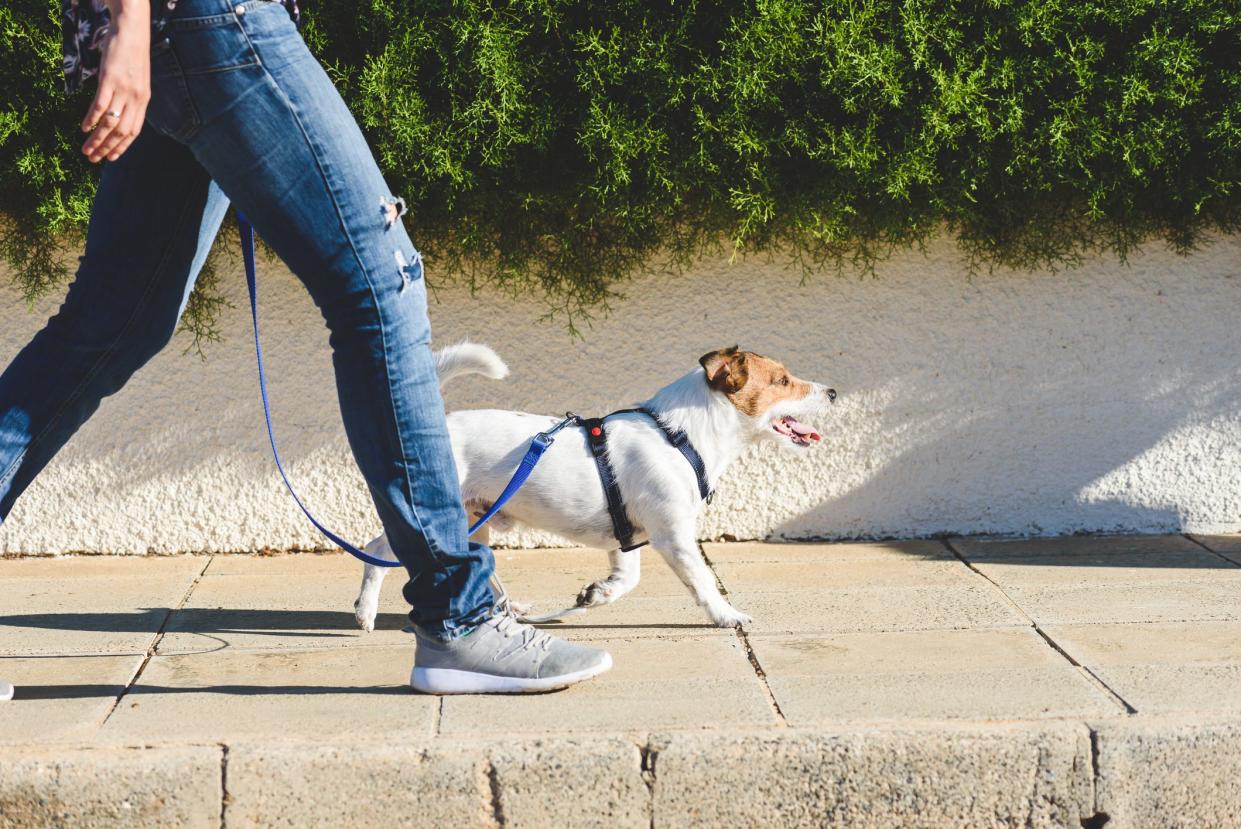10 tips for training a new dog or puppy
No Ruff Days
One of the biggest challenges in bringing home a puppy or rescue dog is training them properly so they don’t mess with your furniture, carpets, and other belongings. Training a dog can be frustrating, and recruit a trainer can cost hundreds to thousands of dollars; follow these steps instead to save time and money and you can bond and get to know your new best furry friend in the process – how awesome!
Related: Plants Poisonous to Cats and Dogs

Start them young
We’ve all heard the saying, “You can’t teach an old dog new tricks.” In fact, puppies are more receptive to learning at a young age, so it’s important to start training as soon as you get them home. This will help them adapt to their surroundings and learn early on where they are supposed to eat, potty, and have fun.
Related: Dogs versus cats – who makes the best pet?

Use positive reinforcement
Reward your puppy or new dog with treats, praise and affection when he behaves well, such as going to the bathroom in the right place or sitting down when you tell him to. Avoid punishing your puppy, as this can cause fear and aggression, making it more difficult to train them in the long term.

Use basic commands
Teach your puppy basic commands such as “sit”, “stay” and “come” to help him learn to follow directions and behave appropriately when guests are around. By keeping commands short, your dog will learn to recognize the sound of certain words and their meanings.

To be coherent
Use the same commands for specific behaviors — like rolling your hand into a fist to signal “sit” or waving a hand to show them how to “roll over” — and be consistent with these each time to help a pup understand what which is expected. .

Set limits
It’s important to establish rules and boundaries for your puppy or new dog from the start. This will help them understand what behavior is acceptable and what is not. Establishing healthy boundaries can include placing them in a designated “time out” area, such as a playpen or crate when they are misbehaving, or using a stern voice to help them discern when they have do something wrong.

Consider crate training
While a crate can be a useful tool for potty training and preventing accidents in the home, be sure to properly introduce a puppy to the crate and never leave them inside for long periods of time. periods, as it may harm their mental or physical health. According to PetCubeadult dogs should not be crated for more than six to eight hours, and puppies 17 weeks and older should be left in a crate for a maximum of four to five hours at a time.

Socialization is key
Expose your puppy to a variety of people, places, and experiences to help him adapt and build confidence. Studies show that socializing a dog at an early age – after they’ve had all their shots – results in less anxious, healthier and happier dogs. It’s also important to allow your dog to meet and socialize with other dogs so he doesn’t bark at every passing animal. (Take it from a barking dog owner.)

Go for a walk
Regular exercise is important for physical and mental well-being. Take a pup for walks, runs, and play sessions to help him burn energy, breathe fresh air, and stimulate his mind. It’s important to take your dog for a walk at least once a day to help him learn to relieve himself outside. walks also help enrich the senses of dogs as they sniff around and see new sites.

Train in short sessions
Puppies have short attention spans and experts recommend keeping training sessions short and sweet. To aim 5 to 10 minute sessions several times a day to keep animals focused. Be sure to reward them with their favorite treats (and many pets) when they respond correctly to commands.

Ask for help if needed
If you’re having trouble training a puppy or aren’t sure how to proceed, don’t hesitate to seek the help of a professional dog trainer or behaviorist. Some dogs have behavioral issues that will make training more difficult. Watch especially if your dog shows signs such as aggression or excessive barking.

More Cheapism:
Do you like the content of Cheapism? Be sure to follow us.


Comments are closed.